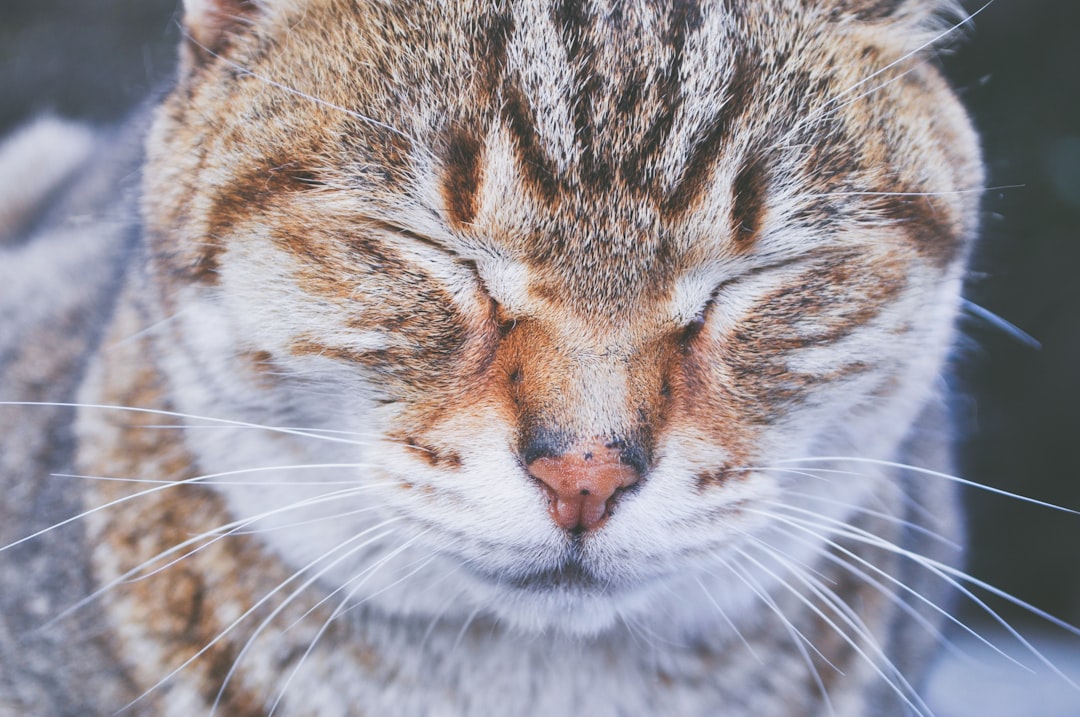Are you struggling to get your furry friend to follow commands or curb undesirable behaviors? Understanding the importance of cat training is crucial for fostering a harmonious relationship between you and your feline companion. Not only does training help instill obedience, but it also enhances your cat’s mental stimulation and social skills. However, finding the right assistance can feel overwhelming. With various training services available, it’s essential to know what to look for and how to find cat training near me that suits your needs. This blog post will guide you through the nuances of cat training, including types of available services, associated costs, and ways to prepare for a successful training session. By exploring local success stories, you’ll see how the right training can transform your kitty’s behavior and strengthen your bond.
Understanding the Importance of Cat Training
Cat training is often overlooked, yet it plays a crucial role in enhancing the relationship between you and your feline friend. Training not only fosters good behavior but also contributes to the overall well-being of your cat. Let’s delve deeper into the significance of cat training.
Benefits of Training Your Cat
Training offers numerous advantages, as highlighted in the table below:
| Benefit | Description |
|---|---|
| Improved Behavior | Reduces unwanted behaviors like scratching or jumping on counters. |
| Increased Safety | Teaches commands that can help keep your cat safe. |
| Mental Stimulation | Engages your cat’s mind, preventing boredom. |
| Strengthened Bond | Creates a deeper connection between you and your cat. |
| Socialization Skills | Prepares your cat for interactions with other pets and people. |
Common Training Myths
Despite its importance, several misconceptions about cat training persist. Here are a couple of common myths debunked:
| Myth | Fact |
|---|---|
| Cats Can’t Be Trained | Cats can learn commands and behaviors, much like dogs. |
| Positive Reinforcement Isn’t Necessary | Reward-based training is effective and encourages good behavior. |
The Role of Professional Trainers
Enlisting the help of professional trainers can significantly improve the training experience. They provide:
- Expertise: Knowledge of various training techniques tailored to your cat’s personality.
- Support and Guidance: Help you navigate the challenges of cat training.
- Structured Programs: Provide a clear roadmap to achieve training goals.
If you are interested in finding cat training near me, consider seeking out professionals who can assist you in shaping your cat’s behavior positively and effectively.
What to Look for in a Cat Training Service
When searching for the ideal cat training service, you want to ensure that you choose a provider that meets your cat’s unique needs. Here are several key factors to consider:
Credentials and Experience
Before entrusting your feline friend to a trainer, verify their credentials and experience. A qualified trainer should have:
| Criteria | Importance |
|---|---|
| Certification | Indicates formal training in animal behavior and training techniques. |
| Years of Experience | More experience usually means a better understanding of different cat behaviours. |
| Specialization | Some trainers specialize in specific issues, such as aggression or anxiety. |
Training Methods Used
Different trainers employ various techniques, so it is crucial to understand their approach:
| Method Type | Description |
|---|---|
| Positive Reinforcement | Rewards desired behaviors, promoting a loving bond between cat and owner. |
| Clicker Training | Uses a clicker sound to mark correct actions, followed by a treat. |
| Behavioral Modification | Addresses specific problems through structured plans. |
Customer Reviews and Testimonials
Take time to research customer feedback to gauge the quality of service:
| Source | Value |
|---|---|
| Online Reviews | Platforms like Yelp or Google can provide insights into client satisfaction. |
| Word of Mouth | Recommendations from friends or local pet owners hold a lot of weight. |
| Success Stories | Trainers may share testimonials showcasing their effective training methods. |
By considering these aspects, you’ll be more equipped to find cat training near me that offers the best fit for your furry companion.
How to Find Cat Training Near Me
Finding the right cat training service can feel overwhelming. However, utilizing effective strategies can help you locate the best options available to you.
Online Research Strategies
A great starting point is to leverage the power of the internet. Use search engines to explore local trainers by entering keywords like “cat training near me.” Pay attention to ratings, reviews, and testimonials as they can provide insight into a trainer’s effectiveness. Consider websites like Yelp and Google Maps, which allow you to filter trainers based on distance, customer reviews, and service offerings.
| Platform | Benefits | Considerations |
|---|---|---|
| Google Maps | Shows local trainers, reviews | May vary by location |
| Yelp | Detailed customer reviews | Not all trainers may be listed |
| Social Media (Facebook) | Community recommendations | Varies by group activity |
Local Pet Stores and Vet Recommendations
Don’t overlook local pet supplies stores or your veterinarian’s office. Both often have connections with professional trainers or may even host training classes. Ask staff members for referrals or check for bulletin boards that might post local training announcements.
Community Resources and Social Media Groups
Joining community resource groups, such as local pet owner clubs or online forums, can significantly aid your search. Platforms like Facebook or Reddit often have dedicated groups where pet owners share experiences and recommend trainers. Websites such as Nextdoor can also provide neighborhood-specific insights. Engaging with these community connections can lead to valuable recommendations from those with similar experiences.
By combining these strategies, you can effectively narrow down your options and find the cat training near me that suits your needs best.
Types of Cat Training Available
Training your feline friend is essential for ensuring a harmonious household. Various types of training cater to different needs and behavioral issues. Here’s a breakdown of the most common types of cat training available:
Basic Obedience Training
Basic obedience training focuses on teaching cats essential commands and behaviors. This foundational training can help improve the cat’s behavior in various situations.
| Key Commands | Benefits |
|---|---|
| Sit | Encourages focus and calmness |
| Come | Enhances safety and recall |
| Stay | Promotes impulse control |
Behavior Modification Techniques
For cats exhibiting unwanted behaviors, behavior modification techniques are crucial. Professionals use positive reinforcement methods to change negative habits. Some common issues addressed include:
| Problem Behavior | Technique Used |
|---|---|
| Scratching furniture | Redirecting to scratching posts |
| Litter box avoidance | Positive reinforcement with treats |
| Aggression | Gradual desensitization |
Specialized Training for Unique Needs
Certain cats may require specialized training due to unique circumstances, such as anxiety, fear, or illness. Tailored programs can help these cats feel more comfortable in their environments. Examples include:
| Special Need | Training Approach |
|---|---|
| Anxiety or Fear | Gradual exposure exercises |
| Clicker Training | Use of a clicker to reinforce good behavior |
| Socialization for Kittens | Interaction with various people and pets |
By understanding these types of training, you can make informed decisions about the cat training near me options that best suit your kitty’s needs.
Costs Associated with Cat Training
Average Pricing for Local Services
When it comes to cat training near me, understanding the average costs is essential for budgeting. Typically, cat training services can range from $50 to $150 per session, depending on the trainer’s experience and location. Some trainers offer packages that may reduce the overall cost. For instance, a block of five sessions might cost around $600, providing better value. Here’s a breakdown of average costs:
| Service Type | Cost per Session |
|---|---|
| Private Training | $75 – $150 |
| Group Classes | $25 – $50 |
| Behavioral Consultations | $100 – $200 |
Factors Affecting Training Costs
Several factors can significantly influence the cost of cat training services:
| Factor | Impact on Cost |
|---|---|
| Trainer Experience | More experienced trainers typically charge higher fees. |
| Training Methodology | Positive reinforcement methods may have higher initial costs. |
| Location | Urban areas often have higher prices than rural regions. |
| Session Length | Longer sessions can lead to higher costs. |
Financial Assistance Options
If you’re concerned about the costs associated with cat training, consider the following financial assistance options:
- Payment Plans: Many trainers offer payment plans that allow you to spread the cost over several months.
- Nonprofits: Some animal welfare organizations provide training services at reduced rates or even for free.
- Scholarships and Grants: Look for local groups that might offer financial support for training services aimed at ensuring better pet behavior.
By understanding the costs associated with cat training near me, you can make informed decisions that benefit both you and your furry friend.
Preparing for Your First Training Session
What to Bring to the Session
To ensure a smooth first training session, it is essential to come prepared. Here’s a list of items to bring:
| Items | Purpose |
|---|---|
| Leash or Harness | Helps in controlling your cat during training. |
| Treats | Rewards for positive behavior; motivates your cat. |
| Favorite Toys | Engages your cat and makes the session fun. |
| Training Clicker (if applicable) | Aids in marking desired behavior instantly. |
Setting Realistic Expectations
Understanding that each cat has individual learning curves is vital. While some cats may grasp commands quickly, others might require more time. Here are key points to remember:
- Short Sessions: Training should ideally last 5-10 minutes, as attention spans are often short.
- Patience is Key: Progress may be slow initially; remain patient and encouraging.
- Celebrate Small Wins: Every little achievement is a step towards better behavior, and it’s important to acknowledge them.
Understanding Your Cat’s Personality
Recognizing your cat’s personality traits can significantly impact how you approach training. Here’s a simple guide to various personalities you may encounter:
| Personality Type | Characteristics | Training Approach |
|---|---|---|
| Shy/Timid | Hesitant and easily scared | Use gentle encouragement and a calm voice. |
| Curious | Eager to explore and learn | Incorporate play into sessions for engagement. |
| Stubborn | Resistant to commands | Patience and consistency are crucial; use high-value rewards. |
| Active | Full of energy, easily distracted | Keep sessions dynamic with various activities. |
By understanding what to bring, setting realistic goals, and knowing your cat’s unique personality, you’ll lay a solid foundation for a successful training experience. For more specific help, consider searching for Cat training near me to find local experts who can provide personalized guidance.
Evaluating Training Progress
Evaluating the effectiveness of your cat’s training is crucial for both you and your feline friend. By regularly assessing progress, you can ensure your cat is learning in a manner that best suits them, while also determining if any adjustments are needed in training techniques.
Signs of Success in Training
To measure your cat’s training progress, keep an eye out for specific indicators of success. Here’s a quick checklist:
| Sign | Definition |
|---|---|
| Behavior Changes | Noticeable improvements in behavior, such as reduced aggression or anxiety. |
| Response to Commands | Your cat consistently follows commands (e.g., sit, stay). |
| Increased Engagement | Your cat shows willingness to participate in training sessions. |
If you identify these signs, it’s a positive affirmation of your efforts.
Adapting Training Techniques
Training is not a one-size-fits-all approach. If your cat isn’t responding well, it may be time to adapt your methods. Consider the following:
- Change Your Environment: A different setting may reduce distractions.
- Introduce New Rewards: Cats have unique preferences; experiment with different treats or toys.
- Pace the Sessions: Shorter, more frequent training sessions often yield better results.
When to Seek Additional Help
If your cat shows minimal progress despite consistent training, it might be beneficial to look for professionals. Cat training near me can connect you with experts who can offer specialized guidance tailored to your cat’s unique needs. Indicators that you should consult a professional include:
- Persistent behavioral issues that training has not resolved.
- Your cat displays stress or fear during sessions.
- You feel overwhelmed or unsure about the next steps.
Recognizing when to seek help ensures your kitty receives the best possible training, setting both of you up for a harmonious life together.
Staying Engaged After Training
Maintaining Training Techniques at Home
After completing your cat’s training sessions, it is crucial to maintain the techniques you’ve learned to ensure long-lasting results. Consistency is key. Reinforce the commands or behaviors with regular practice at home. Here are some tips:
| Technique | Description |
|---|---|
| Routine Reinforcement | Dedicate a few minutes each day to practice commands. |
| Positive Reinforcement | Reward good behavior with treats or affection. |
| Environment Setup | Ensure your home is conducive for practicing. |
Incorporating Tricks and Activities
To keep your furry friend engaged and mentally stimulated, consider incorporating fun tricks and activities into your routine. This not only enhances their skills but also strengthens your bond. Popular activities that you can try include:
| Activity | Benefits |
|---|---|
| Puzzle Toys | Stimulate problem-solving skills. |
| Agility Training | Boost physical health and coordination. |
| Trick Training | Keep your cat’s mind active while making it fun. |
Building a Bond with Your Cat
Strengthening your relationship with your cat doesn’t end with training. Spend quality time engaging in play and fostering trust. Here are some effective methods:
- Interactive Play: Use toys that encourage participation, such as feather wands or laser pointers.
- Calm Environment: Create a space where your cat feels safe and comfortable. This will encourage them to approach you willingly.
- Routine Care: Regular grooming and health check-ups help build trust. Cats enjoy the attention if introduced as positive experiences.
By staying engaged after completing training, you can enhance your cat’s skills while deepening the bond you share. Remember, if you’re looking for cat training near me, consider reaching out to local professionals for additional guidance and support!
Local Success Stories and Case Studies
Client Testimonials
Success stories from satisfied clients can highlight the real-world impact of cat training. Many pet owners report significant improvements in their cats’ behaviors after seeking professional help. For example, Sarah, a local cat owner, discovered that after just a few sessions with a nearby trainer, her once-timid tabby, Whiskers, not only overcame his fear of strangers but began engaging more during playtime. Such testimonials offer valuable insights into the effectiveness of various training approaches.
Before and After Transformations
Before and after transformations can visually depict the benefits of cat training. Consider the following table that showcases common issues and their outcomes post-training:
| Behavior Issue | Before Training | After Training |
|---|---|---|
| Litter box avoidance | Frequent accidents throughout the house | Consistent use of the litter box |
| Aggression towards pets | Hissing and swatting at housemates | Calm interactions and shared playtime |
| Excessive meowing | Constant vocalization at night | Improved nighttime silence and reduced anxiety |
These transformations reveal just how impactful cat training near me can be for both cats and their owners.
Advice from Experienced Owners
Insights from veteran cat owners can guide newcomers toward effective training practices. Many experienced owners recommend starting early and maintaining consistency. For example, they suggest using positive reinforcement techniques, such as treats or praise, to encourage good behavior. Additionally, some encourage researching local trainers who specialize in particular behavioral issues that your cat may exhibit, fostering a more tailored approach to training. Engaging with community resources, online forums, and social media groups can also provide invaluable support and advice throughout the journey.
Frequently Asked Questions
What should I look for in a professional cat trainer?
When searching for a professional cat trainer, it’s essential to consider their experience, training methods, and certification. Look for trainers who have a background in animal behavior and training, specifically with cats. Their methods should be positive reinforcement-based, ensuring a humane and effective approach to teaching your kitty. Additionally, check for client testimonials and reviews, and see if the trainer offers a philosophy that aligns with your own values regarding pet care. A well-qualified trainer will be happy to discuss their techniques and answer any questions you have.
How much does professional cat training typically cost?
The cost of professional cat training can vary widely depending on several factors, including the trainer’s experience, location, and the type of training offered. On average, you can expect to pay between $50 to $150 per session. Some trainers may offer package deals or group classes which can be more economical. It’s important to consider not just the cost but also the qualifications of the trainer, as investing in quality training can lead to long-term benefits in your cat’s behavior and your relationship with them.
How do I determine if my cat needs training?
Determining if your cat needs training often involves observing their behavior. Signs that training may be beneficial include consistent litter box issues, scratching furniture, aggressive behavior, or anxiety symptoms. Additionally, if your cat exhibits difficulty adapting to new environments or meets new people, training can help with socialization and behavioral management. Consulting with a professional trainer can provide insights and assessments tailored to your cat’s specific needs, helping to foster a more harmonious relationship.
Are there specific training methods that work best for cats?
Cats respond best to training methods that utilize positive reinforcement, which encourages desired behaviors by rewarding cats with treats, praise, or playtime. Techniques such as clicker training can be highly effective, as they help the cat associate sounds with positive outcomes. Other methods may include creating a structured routine, using environmental enrichment tools, and encouraging natural behaviors. It’s important to remember that cats, unlike dogs, may require more patience and creative approaches since their motivations can differ significantly.
Can I train my cat myself, or should I hire a professional?
Training your cat yourself is certainly possible, especially for basic commands and behavioral management, provided you are committed and patient. There are numerous resources, such as books, online courses, and videos, that can guide you through the process. However, hiring a professional trainer may be beneficial for more complex issues or if you feel overwhelmed. Professionals can offer customized strategies specific to your cat’s needs and help facilitate effective learning. Ultimately, the best choice depends on your comfort level, desired outcomes, and your cat’s individual traits.



